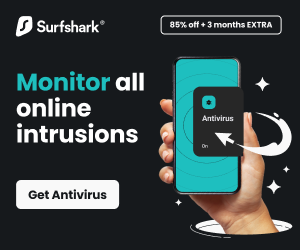Learn why security isn’t just about passwords anymore in this post.
When was the last time you forgot a password and had to reset it three times before giving up? Chances are, it wasn’t that long ago. We’ve all been there—staring at a login screen, trying every combination of pet names, birthdays, and favorite foods before clicking “forgot password” like it’s a lifestyle.
But here’s the catch: while we fumble with password managers and two-factor apps, cyber attackers aren’t wasting time on your Netflix login. They’re going for the back door. And sometimes, that door isn’t even locked.
The idea that cybersecurity begins and ends with a strong password is outdated. It’s a comforting myth. One we like to believe because it feels manageable. But in a world where everything from your fridge to your workplace runs on some form of connected software, the real vulnerabilities are hiding in places that don’t even have usernames.
This shift isn’t theoretical. It’s happening in real time. Massive attacks like the SolarWinds breach and the NotPetya malware didn’t succeed because someone used “password123.” They slipped through unnoticed entry points, leveraging accounts and systems that most companies barely monitor.
In this blog, we will share how cybersecurity threats have evolved, where most organizations are still exposed, and what you can do to get ahead of the problem before it gets worse.
Table of Contents
The Entry Points No One Thinks About
Everyone likes to talk about human error. Clicking bad links. Falling for phishing scams. Using the same password across every platform since college. And sure, those things still matter. However, as software becomes increasingly complex and systems become more interconnected, a different weak spot is emerging that’s receiving less attention: automation.
Behind the scenes of every business network are service accounts. These aren’t tied to real people. They’re the behind-the-curtain players that keep software talking to other software. From your customer database syncing with your email tool to scheduled system patches, these accounts handle critical functions without anyone noticing—until something goes wrong.
And here’s the uncomfortable truth: most organizations are still struggling with service account security. These accounts often have elevated permissions, rarely rotate passwords, and are rarely audited. In some companies, no one even knows how many exist or who owns them. That’s like having dozens of spare keys floating around without a clue who has them—or if they’ve ever been returned.
In legacy systems, it’s even worse. Many service accounts have been running quietly for years, never updated, never checked. They may still have admin access, even if the original software was retired.
That creates a perfect storm for attackers. Instead of wasting time guessing your personal password, they can compromise an old service account and get free rein through your systems without triggering alarms.
It’s Not Just About Getting In
Cybercrime used to be about smashing the front window. Now, it’s about picking the lock quietly, walking through the house, and leaving without a trace. The motivation isn’t always obvious either. Some attackers want data. Others want to hold systems hostage. Some just want chaos. And they all know how to wait.
Many breaches aren’t discovered for weeks or months. The attack doesn’t happen the day the account is compromised. It comes later—after reconnaissance, after data mapping, after backdoors have been installed. This long game relies on the fact that most companies simply aren’t watching the right things.
That’s why improving security isn’t just about stronger passwords or longer passphrases. It’s about understanding the full scope of your system. What connects to what? Which accounts exist? Which ones haven’t been used in years? Those who have never changed passwords. It’s less about brute force and more about visibility.
And let’s be honest: the average business doesn’t have unlimited resources to throw at cybersecurity. Most teams are juggling tools, vendors, training, compliance requirements, and the pressure to keep operations running smoothly. But skipping the boring parts—the documentation, the account audits, the permission cleanups—is how big problems start.
Where Modern Security Starts
Fixing this isn’t impossible. But it does require a mindset shift. Think of cybersecurity like maintaining a city. You can’t just build a stronger front gate. You need streetlights, patrols, updated maps, and systems that flag suspicious behavior even when no one’s watching.
Start by taking inventory of what you already have. That includes users, service accounts, devices, and systems. Know what’s in your network. Know what it’s connected to. If an account hasn’t been used in six months, ask why. Disable it if it’s not critical.
Then tackle permissions. Most service accounts don’t need admin access. Least privilege should be your default setting, not your emergency backup plan. Tighten access where you can. Monitor changes to account behavior. If a service that usually logs in at 2 a.m. suddenly starts pinging servers in the middle of the day, that’s a red flag.
It’s also worth automating some of these processes. Identity security tools can help detect risky configurations, automatically rotate passwords, and identify accounts that don’t belong. You don’t need to solve this manually—but you do need to make it a priority.
Why Waiting Isn’t an Option
Cybercrime is evolving fast. And unlike businesses, attackers don’t need approval from IT. They don’t wait for budget cycles. They just need one missed update or one forgotten account. And in complex environments, that’s not hard to find.
Meanwhile, regulations are tightening. Customers expect more. The cost of a breach—both financial and reputational—has never been higher. In industries such as healthcare, finance, or government, the stakes are even higher.
At the same time, public attention around cybersecurity is growing. Every time there’s a high-profile breach, more companies get nervous. More employees get phishing emails. More consumers wonder whether their data is actually safe. Security has moved from the IT department’s problem to a business-wide concern.
So if you’ve been putting off an audit, or assuming your password policy is enough, this is the time to act. Not when something breaks. Not when your team is working overtime to respond. Start now—while you still have the chance to be proactive instead of reactive.
Building a Smarter Security Culture
None of this means individual passwords don’t matter. Of course they do. But real cybersecurity isn’t just a personal responsibility. It’s systemic. It’s built into processes, culture, and tools. And it requires everyone—from leadership to interns—to understand how their behavior fits into the bigger picture.
That means better training. Not just once a year. Ongoing. Specific. Relevant. It means rewarding people who flag suspicious activity, rather than making them feel paranoid. And it means ensuring your systems aren’t reliant on outdated practices, such as never-rotated service account credentials.
Security doesn’t have to be scary. But it does have to be smarter. We’re not in a world where strong passwords alone are enough. We’re in a world where attackers know your network better than you do. Where they exploit quiet corners and leftover permissions.
That’s why visibility matters. Why maintenance matters. Why service accounts, though easy to overlook, could be the difference between staying secure and ending up in tomorrow’s headlines.
Make the invisible visible. Ask the awkward questions. And stop treating passwords like the only wall between you and disaster.
Because in today’s cybersecurity landscape, they aren’t.
INTERESTING POSTS
- Exclusive Tips To Stop Cyberbullying [For Teens, Parents & Schools]
- Your Complete Home Security Guide: Peace of Mind Awaits
- Signs Your Cybersecurity Strategy Isn’t Working (And What To Do About It)
- Everything You Need To Know About Wireless Access Points
- Casino Etiquette And Proper Behavior
- Integrate Your Calls To CRM System
- What to Do If Your Password Is Found on the Dark Web?
- 4 Essential Tips to Improve Home Security
About the Author:
Amaya Paucek is a professional with an MBA and practical experience in SEO and digital marketing. She is based in Philippines and specializes in helping businesses achieve their goals using her digital marketing skills. She is a keen observer of the ever-evolving digital landscape and looks forward to making a mark in the digital space.










